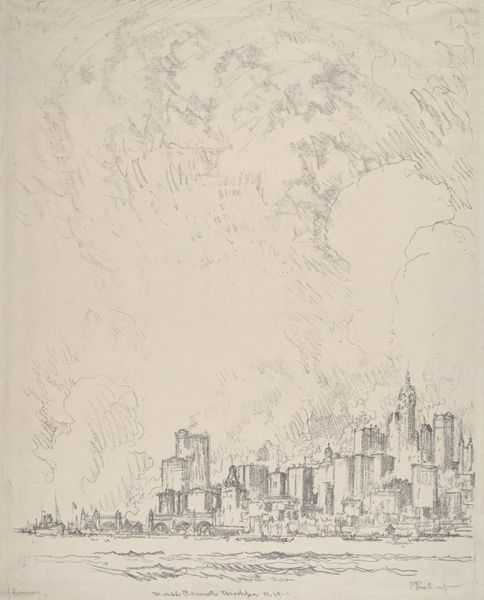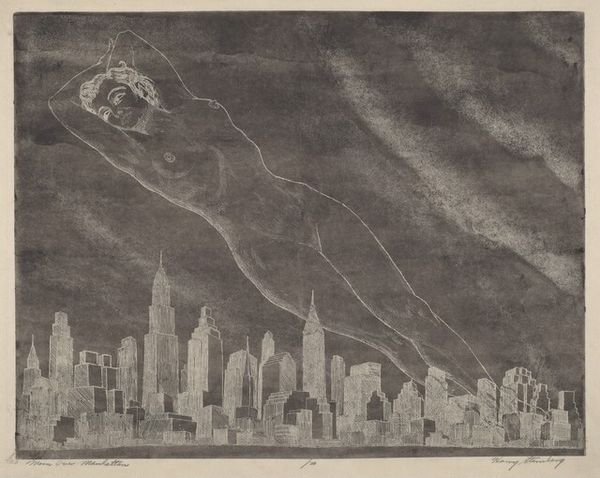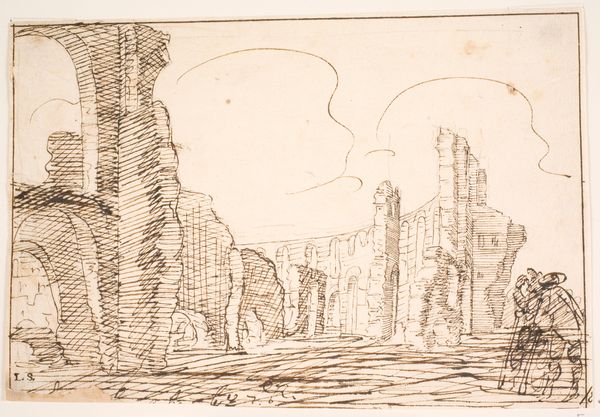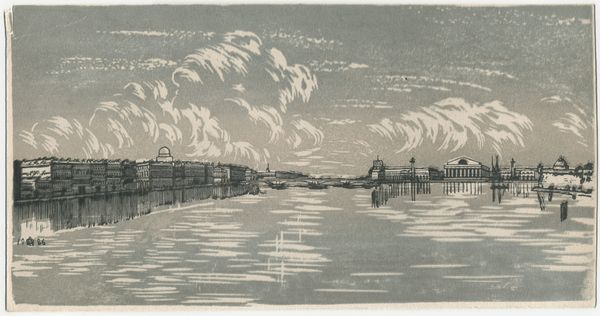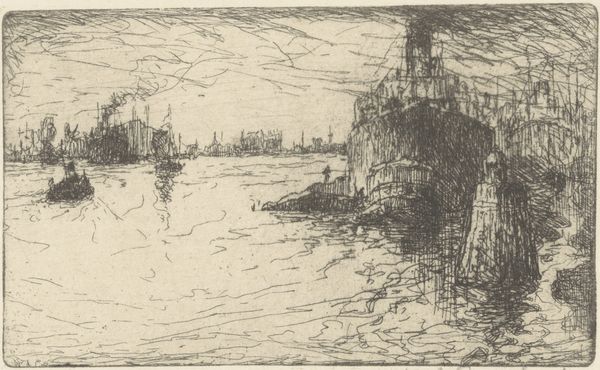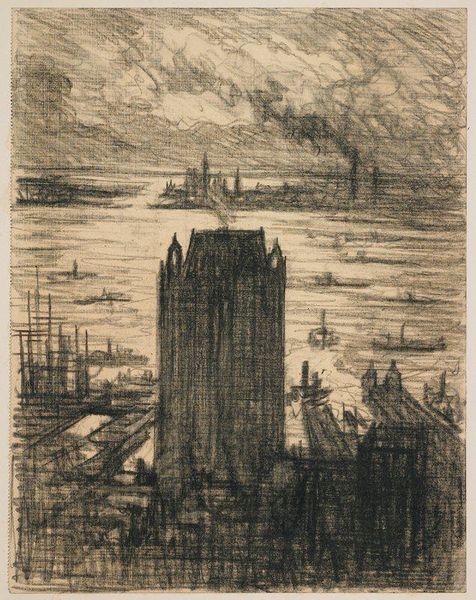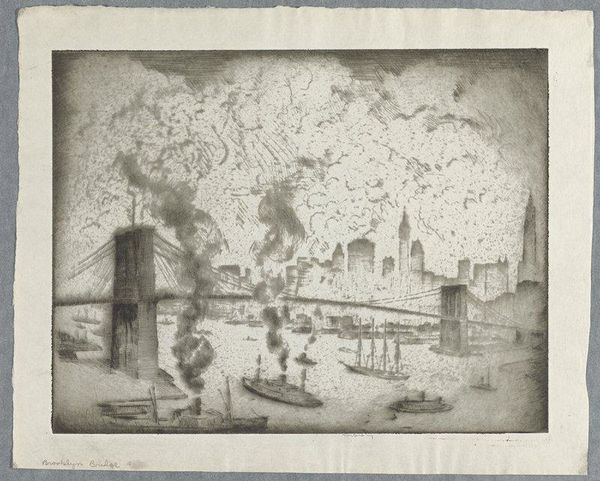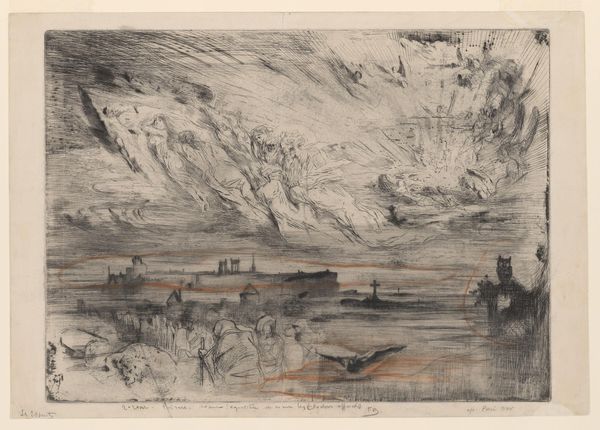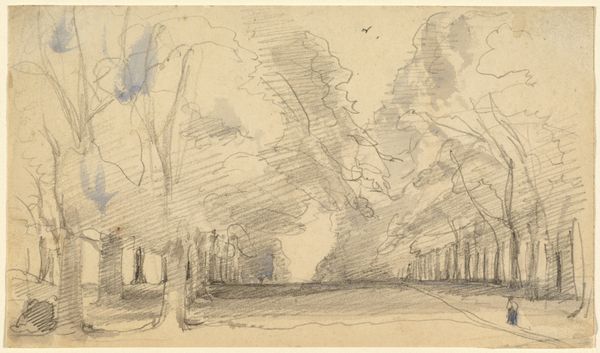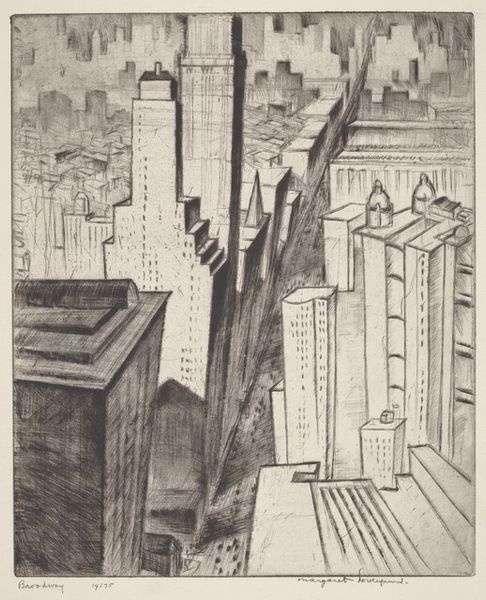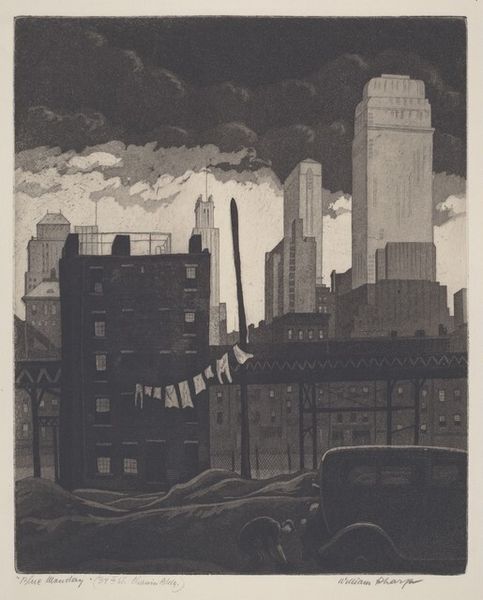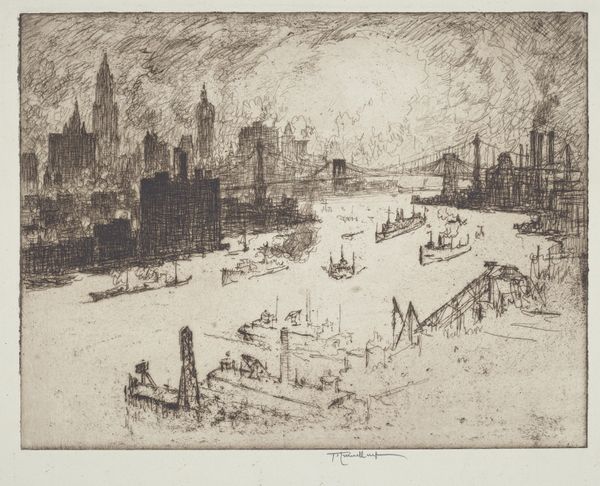
The Submersion of Pharaoh's Army in the Red Sea c. 1515 - 1549
0:00
0:00
drawing, print, etching, paper, engraving
#
drawing
# print
#
etching
#
landscape
#
paper
#
geometric
#
line
#
cityscape
#
history-painting
#
engraving
Dimensions: 412 × 552 mm
Copyright: Public Domain
Curator: Here we have "The Submersion of Pharaoh's Army in the Red Sea," an etching and engraving printed on paper, likely dating from 1515 to 1549 and attributed to Titian. Editor: It’s stark. The overwhelming cloud formation above this detailed cityscape hints at a power that's about to be unleashed. You can feel the tension building in the scene. Curator: Absolutely. Consider how the dramatic use of line in the clouds mirrors the divine intervention at play here. The narrative of the Exodus, particularly this moment, is rich with symbolic weight. The Red Sea represents both a barrier and a passageway, the destruction of oppressors, and liberation. The towering city contrasts with the vulnerable figures below, doesn't it? Editor: That tension you mentioned between power and vulnerability really speaks to me. The linear style is almost harsh, underscoring the cataclysmic nature of the event. It reminds me how depictions of historical narratives often get repurposed, consciously or not, to legitimize power structures in the present. Here the victory and chosen people become inseparable in a specific interpretation. Curator: Indeed, this imagery played a crucial role in shaping cultural identity. You know, the sharp geometric lines used for buildings and landscape are quite fascinating; notice how they echo patterns of belief through structured symbolism. It emphasizes the artist's understanding of geometric composition's emotive capabilities within iconic religious scenes. Editor: That's a potent point. And even today, the image retains its potency as a historical artifact, triggering complex conversations about resistance, identity, and even chosen victimhood, and the danger that the other side faces when opposing God. Even with its technical skill, it makes me question who gets to narrate stories like these. Curator: Agreed. It makes us wonder what the artist tried to tell us. Considering the print medium it can reach diverse and wide audiences as the memory of cultural inheritance perpetuating through symbolical languages of visual narratives. Editor: Ultimately, viewing this artwork through a modern lens necessitates a recognition of both its artistic merits and its deeply interwoven ideological framework, that is more valid when thinking in its role to convey the history into memory. Curator: An engaging and critical dialogue on power dynamics through symbolism is invaluable for the audience, reminding us how stories and images are re-contextualized and reimagined in response to historical discourse. Editor: Absolutely. These artistic works push us to really question and challenge them with time.
Comments
No comments
Be the first to comment and join the conversation on the ultimate creative platform.
